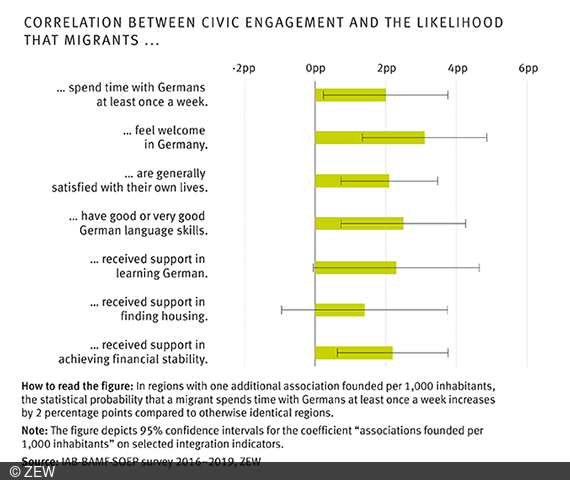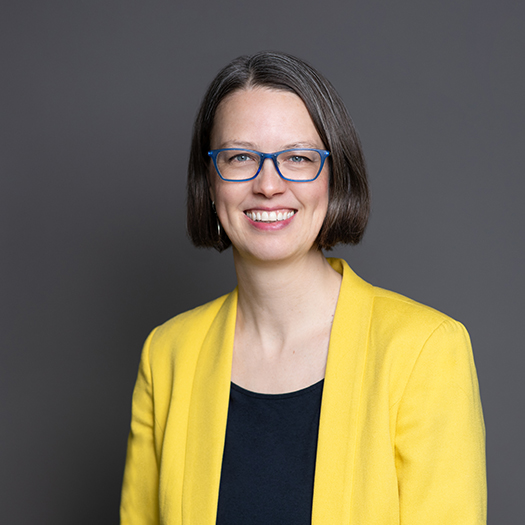Volunteers Contribute Significantly to the Integration of Migrants
ResearchThe Role of Civic Engagement in Integration
Civic engagement in Germany has played an important role in the integration of migrants since autumn 2015. Migrants living in regions with active volunteer groups have had more frequent contact with Germans, have better German language skills and higher life satisfaction. These are the results of a recent study by ZEW Mannheim.
The study found that female migrants and migrants with low levels of education benefited most from local volunteering initiatives. “Women and people without a school-leaving qualification are the groups most likely to face challenges in the education system and the labour market. They are particularly dependent on a reliable local support system after their arrival in Germany,” says Paul Berbée, author of the study and researcher in a ZEW research group on the integration of migrants.
Highly skilled migrants find better paid jobs with the help of volunteers
In regions where support from volunteers is high, migrants with a university degree will find better paid work on average. “Other than that, no further correlation was found between the assistance provided to migrants and their success on the labour market,” says ZEW economist Berbée. “One possible explanation is that migrants focus on learning German first, so that labour market effects can only be observed after three to four years.” Finding a job also more likely depends on the situation in the local labour market than on the support provided by volunteers.
Active civic engagement helps migrants find jobs and housing, as well as acquire language skills and financial stability. “Our results suggest that migrants who are in contact with locals have better access to state benefits,” says Berbée. This shows that voluntary initiatives and public assistance are complementary systems.
Civic engagement increased after 2015
In autumn 2015, at the peak of the last migration wave, numerous associations and other established voluntary initiatives supported migrants upon their arrival in Germany, which helped to coin the term “welcome culture” ( “Willkommenskultur”). Many new initiatives were founded. The representative ZiviZ Survey found that roughly 90,000 civic organisations provided assistance to migrants in 2016, in which about 15 per cent of the German civil population was engaged. It is estimated that three to four years after 2015, between three and six million people volunteered for this purpose. The volunteers support the migrants in many ways, e.g. in the form of joint leisure activities, language lessons, overcoming hurdles in daily life, communicating with authorities or applying for jobs. The ZEW researchers used the founding of new voluntary initiatives as an indicator for active assistance for migrants. The correlation between the founding of a local association and the actual involvement in helping migrants was found to be statistically significant.


